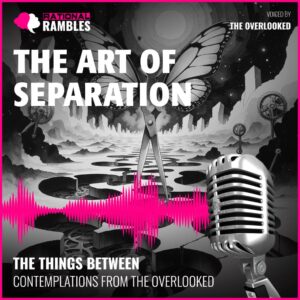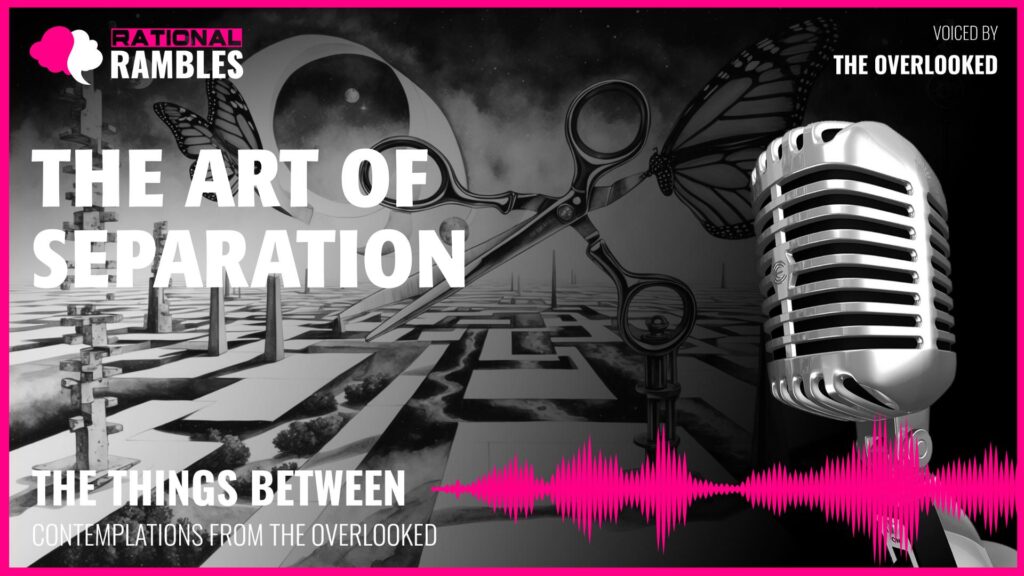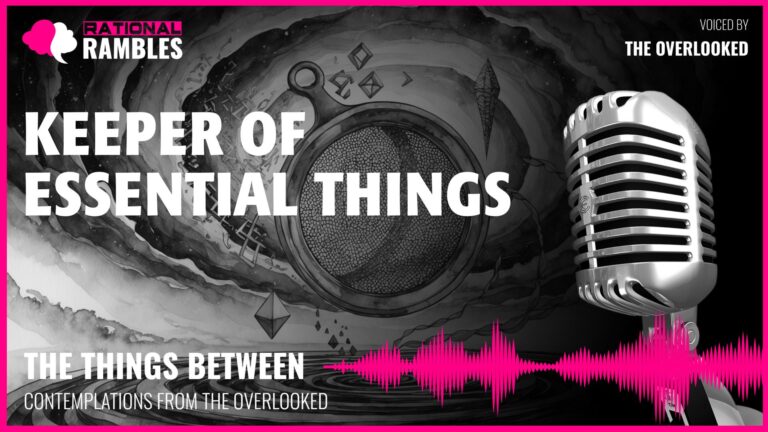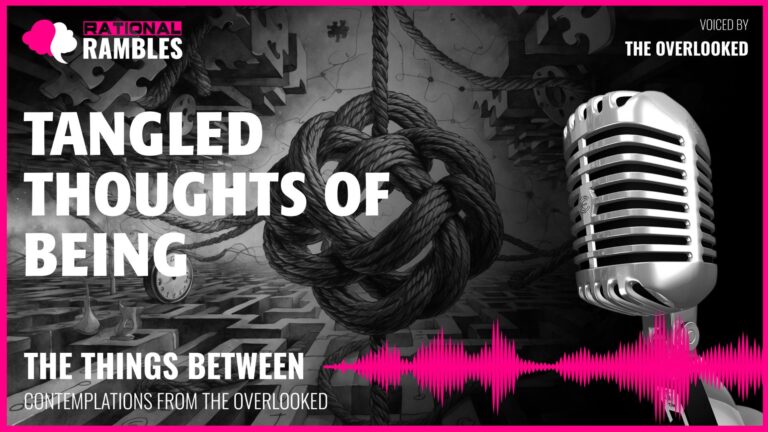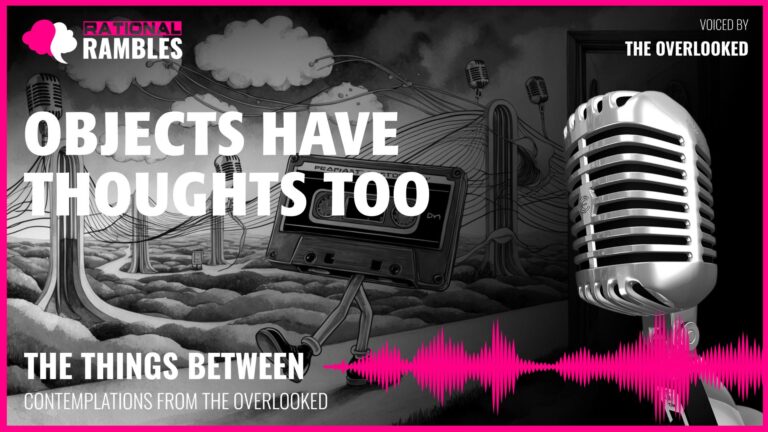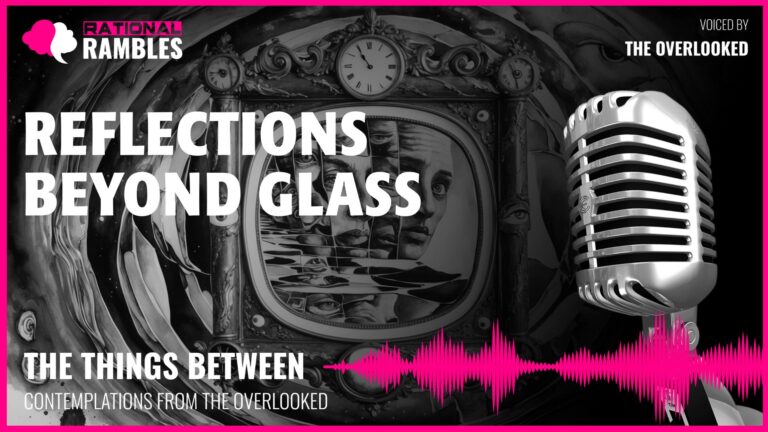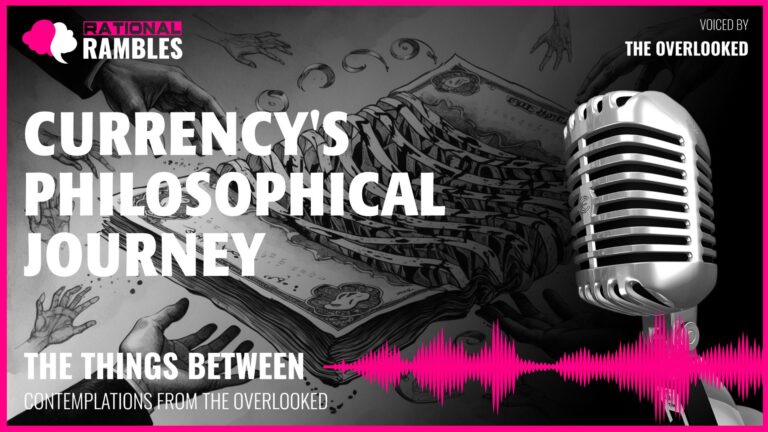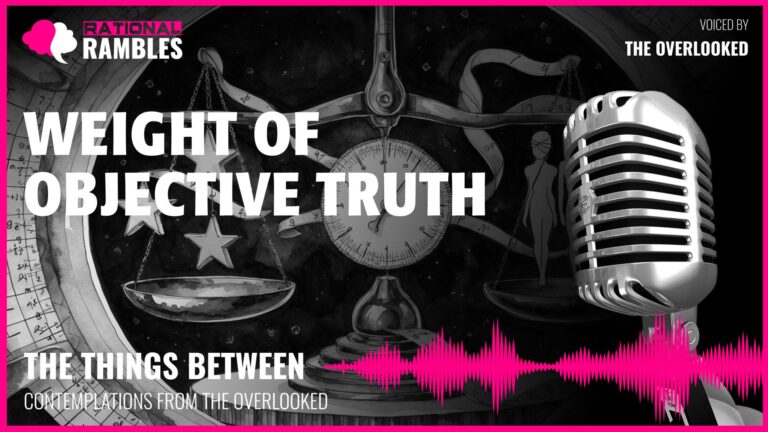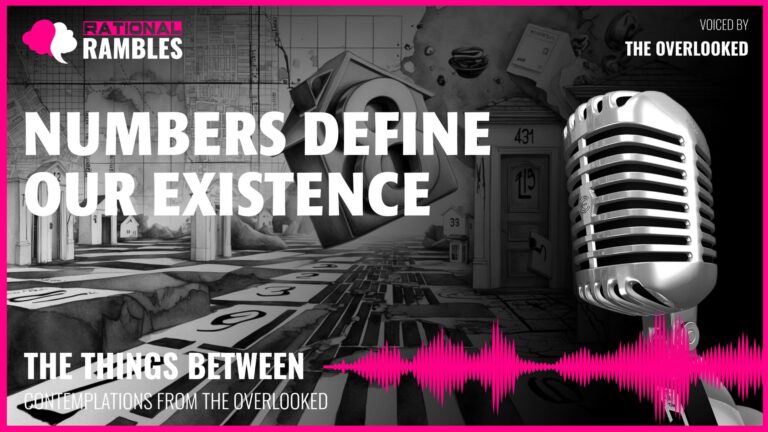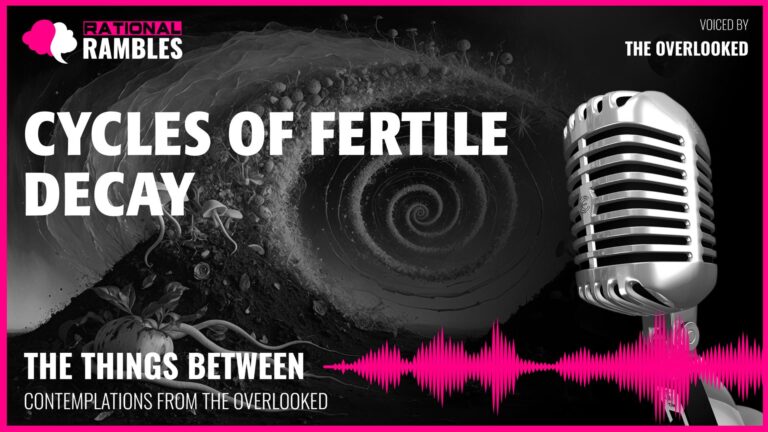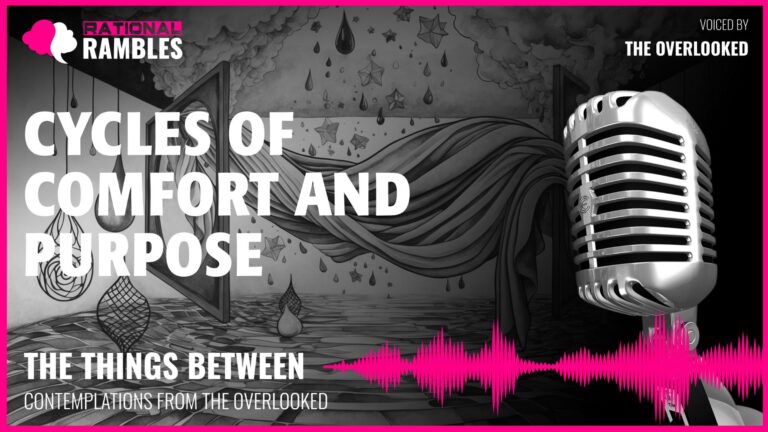The Art of Separation: Philosophical Dimensions of Decisive Action
Introduction
In the tapestry of human experience, few concepts carry as much metaphysical weight as separation. The act of dividing one thing from another—whether physical objects, relationships, or abstract concepts—shapes our understanding of boundaries, identity, and transformation. Separation stands as both a creative and destructive force, marking transitions between states of being and defining the edges of existence itself. This philosophical tension between unity and division provides a rich landscape for exploring fundamental questions about irreversibility, responsibility, and the nature of change.
What does it mean to create a boundary where none existed before? How do we reconcile the finality of certain divisions with our desire for wholeness? When we make irreversible decisions, how does this shape our relationship with time and possibility? These questions invite us to examine the profound implications of separation as both a concrete action and a philosophical concept that permeates human experience.
This article explores the multifaceted nature of separation, examining its role in identity formation, creative transformation, moral responsibility, and existential meaning. By investigating the philosophy of division and the ethics of irreversible action, we may discover that separation is not merely the opposite of connection but a complex phenomenon that paradoxically both divides and creates.
The Ontology of Division
At its most fundamental level, separation raises ontological questions about the nature of being and identity. When something is divided, does it become two new entities, or is it the original entity in altered form? This question has occupied philosophers since antiquity, manifesting in metaphysical puzzles about unity, multiplicity, and the persistence of identity through change.
Paradoxes of Unity and Multiplicity
The ancient Greeks grappled extensively with questions of unity and division. Parmenides argued for the fundamental oneness of being, suggesting that apparent divisions are merely illusions. Conversely, Heraclitus embraced multiplicity and flux, famously asserting that one cannot step into the same river twice. This tension between unity and multiplicity remains central to metaphysical inquiry.
This philosophical debate finds practical expression in the paradox of separation: the act of division simultaneously creates boundaries and relationships. When we separate one thing from another, we establish both distinction and connection. The very concept of separation presupposes a prior relationship between the entities being divided, creating what philosopher Martin Buber might describe as an “I-It” relationship—one characterized by distinction and objectification—rather than the unified “I-Thou” relationship of genuine encounter.
Identity Through Separation
Identity itself emerges through processes of separation. As developmental psychologists note, the infant’s sense of self develops through gradual differentiation from the mother and environment. Similarly, cultural and social identities form through distinctions from “others.” Philosophical perspectives on identity, from John Locke’s emphasis on psychological continuity to contemporary theories of narrative identity, recognize that knowing what we are requires understanding what we are not.
The paradox deepens when we consider that those things most clearly defined by separation—islands, nations, individuals—derive their identity precisely from their boundaries. Yet these boundaries are never absolute; they remain permeable, contested, and subject to change. The philosophical implication is profound: separation both creates identity and renders it inherently unstable.
The Space Between
The philosopher Martin Heidegger spoke of the “clearing” (Lichtung)—the open space where beings can appear as themselves. This conception suggests that separation creates the necessary space for entities to emerge as distinct and knowable. The gaps, the spaces between things, are not mere absences but constitutive elements of reality that allow for the appearance of beings as such.
Emmanuel Levinas extended this thinking to ethics, arguing that the separation between self and other is what makes ethical relationship possible. It is precisely because we are not merged with others that we can encounter them as Other and assume responsibility toward them. Thus, separation becomes not only ontologically significant but ethically necessary.
The Irreversibility of Action
One of the most profound philosophical dimensions of separation is its relationship to irreversibility. Some divisions cannot be undone; some decisions, once made, permanently alter the range of future possibilities. This finality raises vital questions about temporality, responsibility, and the nature of human action.
Hannah Arendt and the Human Condition
Philosopher Hannah Arendt placed particular emphasis on the irreversibility of human action in her work “The Human Condition.” For Arendt, the fact that we cannot undo our actions—that they have consequences that unfold beyond our control—is one of the fundamental conditions of human existence. She writes: “The process of a single deed can quite literally endure throughout time until mankind itself has come to an end.”
This irreversibility creates what Arendt calls the “predicament of unpredictability”—we initiate actions without being able to know their full consequences. The philosophical implications are vast: irreversible separation forces us to confront our temporal embeddedness and the limits of our control over the future. It challenges fantasies of omnipotence and demands a reckoning with finitude.
Decision and Commitment
Existentialist philosophers like Jean-Paul Sartre emphasized that our choices define us. In making decisions that cannot be unmade, we commit not only to a course of action but to a particular version of ourselves. The etymology of “decide” reveals this connection to separation—it comes from the Latin decidere, meaning “to cut off.” To decide is to cut off possibilities, to separate oneself from alternative paths.
Søren Kierkegaard explored this theme through his concept of “the leap of faith”—a decisive commitment that cannot be justified through rational calculation alone. For Kierkegaard, such leaps represent authentic existence precisely because they involve irrevocable separation from the comfort of indecision. The modern philosopher Martin Hägglund further develops this theme, arguing that our commitments matter because they are finite and cannot be taken back.
Regret and Moral Responsibility
The irreversibility of certain separations creates the possibility of regret—that distinctly human emotion that acknowledges the finality of what has been done while wishing it could be otherwise. Bernard Williams and Thomas Nagel have both examined how regret functions in moral psychology, noting that it often persists even when we believe we made the right decision under the circumstances.
This points to a deeper philosophical truth: irreversible actions force us to confront moral responsibility in its most profound sense. When we cannot undo the consequences of our actions, we must either take responsibility for them or resort to denial and bad faith. The philosophy of irreversible separation thus becomes a philosophy of responsibility—of owning the consequences of our decisive actions.
The Creative Dimension of Separation
While separation is often viewed primarily as a destructive force, philosophical analysis reveals its equally important creative dimension. Many of the most significant creative processes involve separation as a constitutive element—the removal of what is unnecessary to reveal or create what is essential.
Aristotle’s Formative Causation
In Aristotle’s four causes, the formal cause relates to the pattern or essential nature that makes something what it is. The sculptor creates by removing marble to reveal the form within—a process of selective separation. This ancient understanding suggests that creation often involves revealing what is potential through the removal of what obscures it.
Modern philosopher Alain Badiou builds on this tradition when he describes artistic creation as “making a cut in chaos.” For Badiou, the artist creates by imposing form and separation upon the undifferentiated. This reflects the broader philosophical principle that meaning emerges through distinction and differentiation rather than through homogeneity.
Separation and Aesthetic Theory
Aesthetic philosophy has long recognized the role of separation in artistic creation and appreciation. Kant’s theory of aesthetic judgment involves a “disinterested” stance—a separation of the viewer from practical concerns that allows for pure aesthetic contemplation. More recently, Jacques Rancière has argued that aesthetic experience involves a “distribution of the sensible”—the creation of new divisions and relations that allow us to see differently.
The philosophy of design similarly emphasizes that elegance often emerges through reduction rather than addition. As Antoine de Saint-Exupéry famously observed: “Perfection is achieved, not when there is nothing more to add, but when there is nothing left to take away.” This perspective suggests that separative acts are essential to refinement and clarity.
Creation Through Subtraction
The creative power of separation extends beyond art to numerous domains of human creativity. Scientific discovery often involves isolating variables to reveal underlying patterns. Conceptual clarity emerges through distinctions that separate one idea from another. Even personal growth frequently requires separating from old habits, relationships, or beliefs to allow new possibilities to emerge.
Philosopher Gilles Deleuze captures this creative dimension of separation in his concept of “deterritorialization”—the process by which fixed relations are destabilized and new connections become possible. For Deleuze, creative forces operate by breaking established patterns and creating new lines of flight. Separation, in this view, becomes a precondition for genuine novelty and transformation.
The Ethics of Precision
Beyond the ontological and creative dimensions of separation lies an ethical dimension concerning how we separate. The contrast between precise, intentional division and haphazard tearing raises important philosophical questions about care, attention, and responsibility in our separative acts.
Precision as Ethical Stance
Philosopher Simone Weil emphasized attention as a moral faculty—a careful, precise focusing of consciousness that respects the reality of what is before us. This ethics of attention suggests that how we separate matters as much as whether we separate. Precise division demonstrates respect for both what is divided and what remains after division.
Medical ethics offers a compelling example of this principle. The surgeon’s precise incision, made with care and knowledge, differs fundamentally from a wound inflicted carelessly or maliciously. Though both create separation in the body, their ethical status differs dramatically based on intention, precision, and context. This illustrates a broader philosophical point: the ethics of separation cannot be evaluated independently of how the separation is performed.
Precision and Power
Michel Foucault’s analysis of power relations highlights how systems of classification and division function as instruments of social control. The power to separate—to classify, categorize, and divide—is fundamental to governance and discipline. This political dimension of separation raises critical questions about who has the authority to establish divisions and how those divisions serve or undermine justice.
Feminist philosophers like Judith Butler have extended this analysis, examining how socially imposed categories and divisions constitute identities in ways that can be either oppressive or liberating. The precision with which we apply labels and create distinctions has profound implications for social justice and human flourishing.
Ethical Boundaries and Limits
The notion of boundaries in ethics—what may or may not be done—involves philosophical questions about appropriate separation. Kant’s categorical imperative establishes absolute boundaries between permissible and impermissible actions. Utilitarian approaches, by contrast, see these boundaries as more fluid, dependent on consequences. Both approaches, however, recognize the necessity of some form of limitation and distinction in ethical life.
Contemporary environmental ethics further illuminates the ethics of separation by questioning the sharp divide between humans and nature that has characterized much of Western thought. Philosophers like Val Plumwood argue that this dualistic separation has enabled environmental exploitation and must be reconceived in favor of a more relational understanding of humans within natural systems.
Separation and Transformation
Perhaps the most profound philosophical dimension of separation concerns its role in transformation and becoming. Separation often marks transitions between states of being, serving as a threshold between what was and what might be.
Rites of Passage and Liminality
Anthropologist Victor Turner’s concept of liminality illuminates how separation functions in transformative processes. In rites of passage across cultures, the first stage is separation from one’s previous status. This creates a liminal state—a threshold condition characterized by ambiguity and possibility—that precedes reintegration into society with a new identity.
Philosopher Giorgio Agamben extends this analysis, examining how separations between categories (human/animal, citizen/non-citizen) create “zones of indistinction” where transformation becomes possible. For Agamben, these threshold spaces reveal the constructed nature of our classifications while opening possibilities for new forms of being.
Dialectical Transformation
Hegel’s dialectical philosophy posits that development occurs through a process of thesis, antithesis, and synthesis. This process necessarily involves separation—the generation of opposition and contradiction—as a precondition for higher integration. The dialectical perspective suggests that separation is not the opposite of unity but rather a necessary moment in the achievement of more complex forms of unity.
Neo-Hegelian philosophers like Alexandre Kojève emphasize that human consciousness itself emerges through separation—the negation of immediate reality that allows for conceptual thought. In this view, our capacity for abstraction and self-awareness depends on our ability to separate ourselves from immediate experience through language and reflection.
The Philosophy of Birth
Few separations are as profound as birth—the physical separation of child from mother that marks the beginning of independent existence. Philosophers from Hannah Arendt to Peter Sloterdijk have explored birth as both a physical event and a metaphysical concept representing the emergence of novelty in the world.
Arendt’s concept of natality—our capacity to begin something new—positions separation as the precondition for originality and initiative. The separation that birth represents becomes a model for understanding human freedom as the capacity to initiate new sequences of events, to introduce novelty into the world through action.
Contemporary philosopher Bracha L. Ettinger offers a nuanced perspective through her concept of “matrixial borderspace”—a framework that recognizes separation and connection as co-existing rather than opposed. This approach suggests that transformative separations need not sever all connections but may create new forms of relation and interdependence.
Separation in Language and Thought
The capacity for conceptual separation is fundamental to human cognition and language. Our ability to distinguish, categorize, and analyze depends on separative operations that have deep philosophical implications.
Language as Division
Structuralist linguistics, following Ferdinand de Saussure, emphasizes that meaning in language emerges through difference and opposition. A word means what it means by virtue of its distinction from other words. This fundamental insight suggests that separation is not merely represented in language but constitutive of language itself.
Poststructuralist thinkers like Jacques Derrida developed this insight through concepts like “différance”—a neologism capturing how meaning emerges through endless deferral and distinction. Derrida’s philosophy of deconstruction examines how binary oppositions (nature/culture, speech/writing) structure thought while concealing the interdependence of supposedly separate categories.
Conceptual Categorization
Cognitive science and philosophy of mind investigate how the human brain organizes experience through categorization—creating conceptual separations that allow us to navigate complex environments. This cognitive necessity raises philosophical questions about the relationship between our categories and reality itself.
Philosophers in the pragmatist tradition, from William James to Richard Rorty, suggest that our conceptual divisions should be evaluated based on their usefulness rather than their correspondence to mind-independent reality. This perspective positions separation as a tool that humans employ to achieve their purposes rather than a discovery of divisions that exist independently.
The Limits of Analytical Separation
While analytical thinking depends on separation and division, various philosophical traditions have identified the limitations of purely analytical approaches. Phenomenologists like Maurice Merleau-Ponty emphasize that lived experience is characterized by ambiguity and intertwining that resist clean conceptual division. Eastern philosophical traditions, particularly Buddhism and Taoism, warn against mistaking conceptual divisions for ultimate reality.
These critiques suggest that while separation is necessary for thought, it can become problematic when we forget the constructed nature of our divisions. This philosophical insight has practical implications for fields ranging from science to ethics, suggesting the need for approaches that balance analytical separation with holistic understanding.
Paradoxes of Separation and Connection
Perhaps the most fascinating philosophical dimension of separation is its paradoxical relationship with connection. Separation and connection do not simply oppose each other but exist in complex interrelation, generating paradoxes that reveal deeper truths about existence.
Separation as Relationship
The philosopher Martin Buber observed that true relationship requires both connection and separation. In his terms, the “I-Thou” relationship depends on recognizing the other as genuinely other—separate from oneself and irreducible to one’s categories or needs. This suggests the paradoxical insight that authentic connection requires separation rather than merging.
Contemporary philosophers like Jean-Luc Nancy develop this theme through concepts like “being singular plural”—the idea that existence is fundamentally shared yet always experienced from singular, separated positions. For Nancy, community emerges not through fusion but through the articulation of distinct beings who are constitutively exposed to one another.
Division that Unites
Some forms of separation paradoxically create new forms of unity. When a cell divides, it creates connection through lineage. When ideas are distinguished through careful analysis, they can be reintegrated into more comprehensive understanding. This dialectical relationship between separation and integration permeates human knowledge and practice.
Philosopher Mary Midgley critiques the “myth of omnicompetence”—the notion that a single method or perspective can address all questions. She argues for acknowledging the legitimate separation between different domains of inquiry while recognizing their interconnection. This philosophical approach neither collapses distinctions nor treats them as absolute, instead maintaining a productive tension between separation and integration.
The Ethics of Interdependence
Contemporary environmental philosophy and ethics of care emphasize interdependence as a fundamental reality that complicates notions of separation. Philosophers like Arne Naess and Joanna Macy argue that the conception of humans as separate from nature represents a dangerous illusion that enables environmental destruction.
Similarly, feminist philosophers like Carol Gilligan and Virginia Held critique the atomistic individualism that imagines humans as fundamentally separate from one another. The ethics of care they propose recognizes both connection and separation, emphasizing that moral maturity involves negotiating the tension between autonomy and relationship rather than privileging either.
Conclusion: The Wisdom of Separation
The philosophy of separation reveals not a simple concept but a complex phenomenon with ontological, ethical, epistemological, and existential dimensions. Through examining separation, we encounter fundamental questions about identity, responsibility, creativity, and relationship that lie at the heart of human experience.
Perhaps the wisdom that emerges from this philosophical exploration is not to avoid separation nor to embrace it uncritically, but to approach it with awareness of its power and implications. Separation, like any fundamental aspect of existence, requires discernment—an assessment of when, how, and why we create divisions and boundaries.
The irreversibility of certain separations teaches us about commitment and responsibility. The creative potential of separation reminds us that division can be generative as well as destructive. The paradoxical relationship between separation and connection reveals the complexity of existence that resists reduction to simple oppositions.
In a world often characterized by harmful divisions—between peoples, between humans and nature, between mind and body—philosophical reflection on separation offers valuable perspective. It suggests that the question is not whether to separate but how to separate with precision, care, and awareness of the interdependence that persists through division.
Ultimately, the philosophy of separation may teach us about finitude and commitment—about the necessity of making choices that close some doors while opening others. In a universe of infinite possibilities, to be something specific requires separation from other possibilities. Our freedom exists not in avoiding such separations but in making them consciously, precisely, and with full awareness of their creative and destructive potential.
As we navigate a reality shaped by both connection and division, the philosophical dimensions of separation offer guidance not toward absolute answers but toward more nuanced questions. How might we separate in ways that enable rather than diminish? How can we acknowledge boundaries while recognizing their permeability? How might we embrace the finality of certain divisions while remaining open to new forms of relationship? These questions may not have universal answers, but in asking them, we approach separation not merely as a fact of existence but as an art that can be practiced with wisdom and care.


